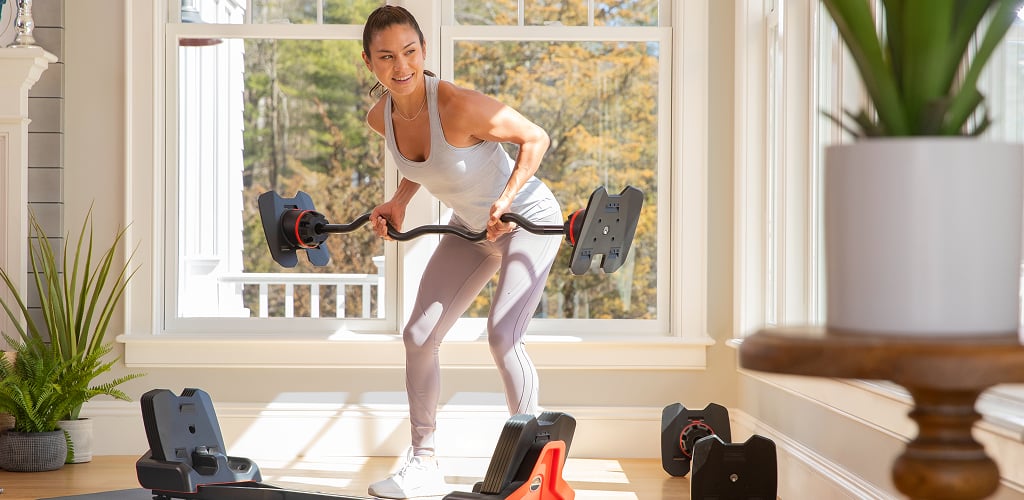What is Hybrid Training? Benefits & Why You Should Try It

With busy schedules and endless to-do lists, making time for fitness can feel overwhelming. But what if there was a way to maximize your fitness routine without putting in hours of work each day? That's where hybrid training comes in.
What is Hybrid Training?
Hybrid training is a general term used to describe the integration of different types of workouts into a single exercise session, rather than just focusing on one area at a time — like cardio, endurance, or strength training.
Hybrid training is gaining popularity through events like HYROX fitness races (think: running plus functional exercises) and Ironman competitions, which involve swimming, biking, and running. But for most of us, the real benefit lies in how efficient combining multiple types of exercise can be for our overall health. Best of all, you can do it from the comfort of your own home gym.
The great thing about hybrid training is that anyone can do it: you can truly make it your own. In fact, if you're already cycling or running on the treadmill and strength training — you're hybrid training! Runners who want to start a strength training routine can benefit from hybrid training, as can weightlifters who want to focus on endurance.

Is Hybrid Training an Effective Way to Work Out?
Yes! Hybrid training can improve your overall fitness and cardiovascular health while reducing your risk of injury. A study published in the AHA journals looked at the impact of different training methods and found that combined (hybrid) training was the most effective modality, even better than HIIT (high intensity interval training), for strengthening your heart and lungs.
It's efficient. Getting the most out of each workout session is the most efficient use of your time, which is especially helpful if you are struggling to find time to squeeze in multiple workouts during the week.
It can improve your overall fitness. When you build strength and endurance simultaneously, you can maximize the benefits of exercise and improve your cardiovascular health, including your blood pressure and cholesterol levels.
It can help prevent injury. Training across multiple fitness modalities improves your muscle strength, joint stability, and endurance, reducing the risk of injury that often occurs when you overtrain.
It can boost your mental health. Tackling new-to-you challenges keeps your brain and body energized and can help stave off feelings of burnout from a stale exercise routine.
How to Incorporate Hybrid Training Into Your Routine
There's not a standard approach to hybrid training, which means you get to set your own goals and make your own rules. Plus, your hybrid training routine doesn't have to be set in stone: you can adapt it over time as your goals change.
Your hybrid training routine might include the following:
Resistance training (aka strength training): if you are new to strength training, consider starting with bodyweight exercises and work up to weighted exercises with dumbbells, a kettlebell, or even a barbell at home.
- Why it's important: resistance training helps you develop strength and build muscle mass while avoiding injury. The American Heart Association recommends you prioritize muscle strengthening activities at least two times per week.
Endurance training: includes steady-state aerobic activities like running, indoor cycling, or swimming.
- Why it's important: Aerobic activities are critical to improving your cardiovascular fitness. Current recommendations include at least 150 minutes of moderate exercise per week or 75 minutes of intense aerobic activity for most adults.

Examples of Hybrid Training Routines
When getting started, try to aim for 3-5 sessions per week of hybrid training with at least one full rest day for recovery. Here are four examples of workouts embracing the hybrid training philosophy:
Option 1: Strength + Bodyweight HIIT Hybrid Workout
What it does: Builds strength with weighted exercises while giving a boost to your cardiovascular endurance with high-intensity intervals.
Alternate weighted or bodyweight strength exercises (lunges, pushups, squats) with high-intensity cardio moves like jump squats or high knees. Aim for 8-10 reps per exercise, with 3-4 total rounds, resting 60 seconds between each round.
Option 2: Cycle + Strength Hybrid Workout
What it does: combines steady-state cardio with strength training to increase your stamina.
Start with a 5-minute warmup on an indoor cycling bike with light resistance. Transition to weighted or bodyweight squats (10-15 reps), followed by 3 minutes on the bike at a moderate effort. Complete a 30 second plank, followed by 4 minutes at a moderate-intense effort on the bike. Transition to bicep curls using a dumbbell or barbell (10-15 reps), followed by 3 minutes on the bike at a moderate effort. End with 5 minutes of cool down stretching.
Option 3: Outdoor Conditioning + Strength (Kettlebell) Hybrid Workout
What it does: running or walking outdoors adds fresh air and variety while strength movements build endurance and stability.
Start with a 5-minute power walk or run at a moderate pace. Transition inside to complete a kettlebell farmer's carry (30 seconds each side), followed by weighted lunges and weighted squats (10-15 reps each). Jog or run outside at a moderate pace for 5 minutes and then complete the strength exercises completed in the last circuit. End with 5 minutes of sprints outside, followed by a 5-minute cool down walk.
Option 4: Pair a Trainer-Led Strength Class with a Cardio HIIT Class
What it does: keeps you challenged and motivated to the finish.
Did you know: we offer free trainer-led videos on the BowFlex YouTube channel? Try this 30-Minute Full Body Kettlebell Workout paired with this 20-Minute Cardio HIIT class.
Get workout inspiration, wellness tips, and the latest deals sent to your inbox.
You may also like:
How to Build Out Your Home Gym in 2025

